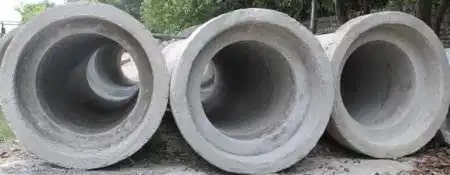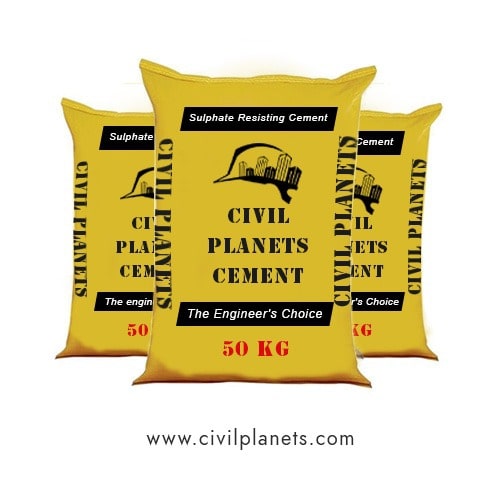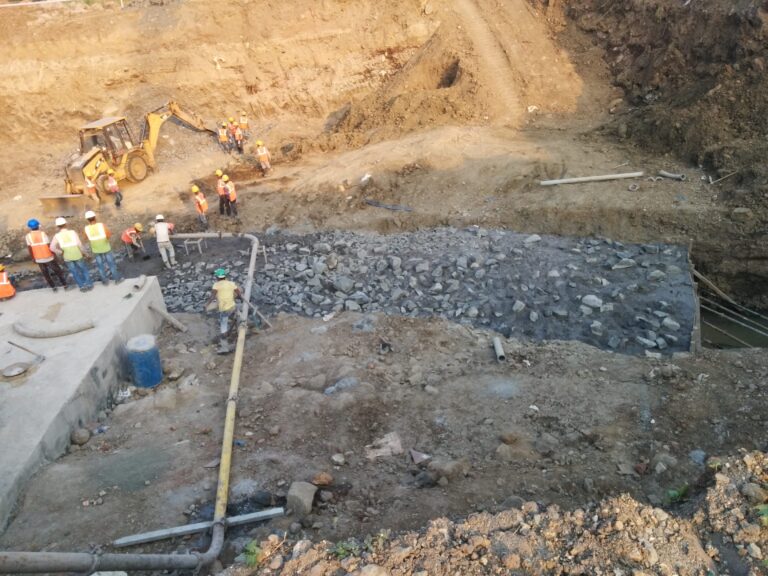Before beginning the Unit weight of construction materials table list. Let’s start with the basics.
What is the Unit weight of a Material?
Unit weight of the material is simply defined as Mass per Volume (M/V) and also it is called Specific Weight or Density.
|
Purpose of Knowing the Unit Weight
Estimations are always not as simple as it looks.
Sometimes we will get a material calculation in different units.
For example, while calculating the cement mortar ratio for plastering we will get the weight of cement in m3 or cubic feet.
However, while buying the cement in stores we need to calculate the number of bags.
|
Unit Weight of Construction Materials at Site
| # | DESCRIPTION | UNIT WEIGHT Kg / m³ |
| 1 | Cement | 1440 Kg / m³ |
| 2 | Sand | 1440-1700 Kg / m³ |
| 3 | Coarse Aggregate | 1680-1750 Kg / m³ |
| 4 | Brick | 1600 – 1920 Kg / m³ |
| 5 | Steel | 7850 Kg / m³ |
| 6 | Plain Cement Concrete | 2300 Kg / m³ |
| 7 | Reinforced Cement Concrete | 2400 Kg / m³ |
| 8 | Lime Stone | 2400 – 2720 Kg / m³ |
| 9 | Stainless Steel | 7480 Kg / m³ |
| 10 | Cast iron | 7203 Kg / m³ |
| 11 | Aluminum | 2739 Kg / m³ |
| 12 | Tin | 7280 Kg / m³ |
| 13 | Copper | 8940 Kg / m³ |
| 14 | Marble Stone | 2620 Kg / m³ |
| 15 | Granite Stone | 2460-2800 Kg / m³ |
| 16 | Kadappa Stone | 2720 Kg / m³ |
| 17 | A.C Sheet | 17 Kg / m³ |
| 18 | Cement Concrete block | 1800 Kg / m³ |
| 19 | Plaster of Paris | 881 Kg / m³ |
| 20 | Water | 1000 Kg / m³ |
| 21 | Alcohol | 780 Kg / m³ |
| 22 | Gasoline | 670 Kg / m³ |
| 23 | Ice | 910 Kg / m³ |
| 24 | Petrol | 720 Kg / m³ |
| 25 | Diesel | 745 Kg / m³ |
| 26 | Crude Oil | 880 Kg / m³ |
| 27 | Clay (dry) | 1600 Kg / m³ |
| 28 | Clay (Damp) | 1760 Kg / m³ |
| 29 | Earth (Dry, loose) | 1200 Kg / m³ |
| 30 | Gravel Soil | 2000 Kg / m³ |
| 31 | Silt | 2100 Kg / m³ |
| 32 | Igneous rocks (Mafic) | 3000 Kg / m³ |
| 33 | Igneous rocks (Felsic) | 2700 Kg / m³ |
| 34 | Sedimentary rocks | 2600 Kg / m³ |
| 35 | Metamorphic rocks | 2700 Kg / m³ |
| 36 | Mud | 1600-1920 Kg / m³ |
| 37 | Rubble stone | 1600-1750 Kg / m³ |
| 38 | Teak | 630-720 Kg / m³ |
| 39 | Red Wood | 450-510 Kg / m³ |
| 40 | Maple | 755 Kg / m³ |
| 41 | Mahogany | 545 Kg / m³ |
| 42 | Larch Wood | 590 Kg / m³ |
| 43 | Birch Wood | 670 Kg / m³ |
| 44 | Sal Wood | 990 Kg / m³ |
| 45 | Nickel | 8908 Kg / m³ |
| 46 | Shale Gas | 2500 Kg / m³ |
| 47 | Anthracite Coal | 1550 Kg / m³ |
| 48 | Peat | 750 Kg / m³ |
| 49 | Heavy Charcoal | 530 Kg / m³ |
| 50 | Graphite | 1200 Kg / m³ |
| 51 | Pitch | 1100 Kg / m³ |
| 52 | Copper | 8940 Kg / m³ |
| 53 | Coal Tar | 1200 Kg / m³ |
| 54 | Rapid Hardening Cement | 1250 Kg / m³ |
| 55 | Lime Concrete | 1900 Kg / m³ |
| 56 | Cement Mortar | 2000 Kg / m³ |
| 57 | Cement Plaster | 2000 Kg / m³ |
| 58 | Lime Plaster | 1700 Kg / m³ |
| 59 | Brick Jelly | 1420 Kg / m³ |
| 60 | Ballast | 1720 Kg / m³ |
| 61 | Sandstone | 2250 to 2400 Kg / m³ |
| 62 | Chalk | 2220 Kg / m³ |
| 63 | Cement Slurry | 1442 Kg / m³ |
| 64 | Light Charcoal | 300 Kg / m³ |
| 65 | Galvanized Iron Steel (0.56 mm) | 5 Kg / m³ |
| 66 | Galvanized Iron Steel (1.63 mm) | 13 Kg / m³ |
| 67 | Mangalore Tiles with Battens | 65 Kg / m³ |
| 68 | Brick Masonry | 1920 Kg / m³ |
| 69 | Dry Rubble Masonry | 2080 Kg / m³ |
| 70 | Nitric Acid (91 percent) | 1510 Kg / m³ |
| 71 | Sulfuric Acid (87 Percent) | 1790 Kg / m³ |
| 72 | Rubber | 1300 Kg / m³ |
| 73 | Bitumen | 1040 Kg / m³ |
| 74 | Slag | 1500 Kg / m³ |
| 75 | Ashes | 650 Kg / m³ |
| 76 | Clinker | 750 Kg / m³ |
| 77 | Plastics | 1250 Kg / m³ |
| 78 | Cement Grout | 1500 to 1800 Kg / m³ |
| 79 | Lead | 11340 Kg / m³ |
| 80 | Zinc | 7135 Kg / m³ |
| 81 | Magnesium | 1738 Kg / m³ |
| 82 | Cobalt | 8746 Kg / m³ |
| 83 | M Sand | 1540 Kg / m³ |
| 84 | Aerocon Bricks | 551 to 600 Kg / m³ |
| 85 | Light Weight Concrete | 800 to 1000 Kg / m³ |
| 86 | Bituminous concrete | 2243 Kg / m³ |
| 87 | Fly Ash | 1120 to 1500 Kg / m³ |
| 88 | Kerosene | 800 Kg / m³ |
| 89 | Laterite Stone | 1019 Kg / m³ |
| 90 | Bituminous Macadum | 2400 Kg / m³ |
| 91 | Fly Ash Bricks | 1468 to 1700 Kg / m³ |
| 92 | Fly Ash Brick Masonry | 2000 to 2100 Kg / m³ |
| 93 | Oak | 730 Kg / m³ |
| 94 | Quarry Dust | 1300 to 1450 Kg / m³ |
| 95 | Quartz | 2320 Kg / m³ |
| 96 | Quick lime | 33450 Kg / m³ |
| 97 | GeoPolimer Concrete | 2400 Kg / m³ |
| 98 | Green Concrete | 2315 to 2499 Kg / m³ |
| 99 | Glass Reinforced Concrete | 2000 to 2100 Kg / m³ |
| 100 | Cement Screed | 2000 Kg / m³ |
Don’t forget the unit weight or density will differ based on location & type of material.




1 Comment
This information about unit weight of all building materials are very much useful for civil engineer.